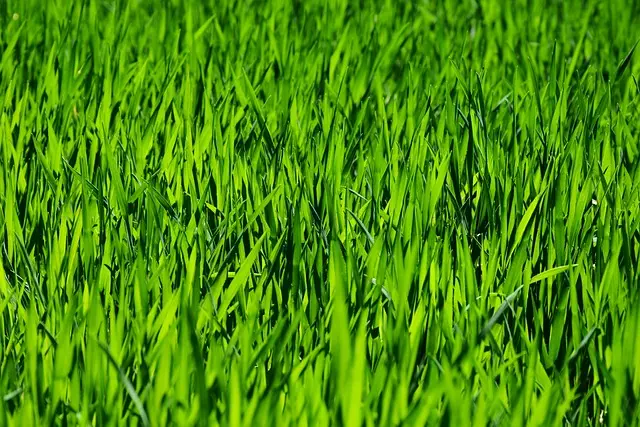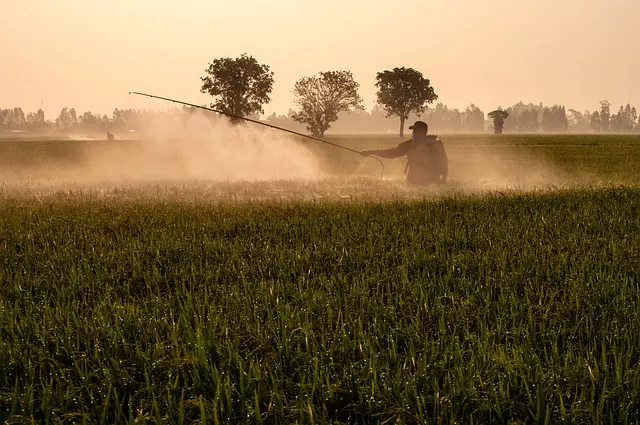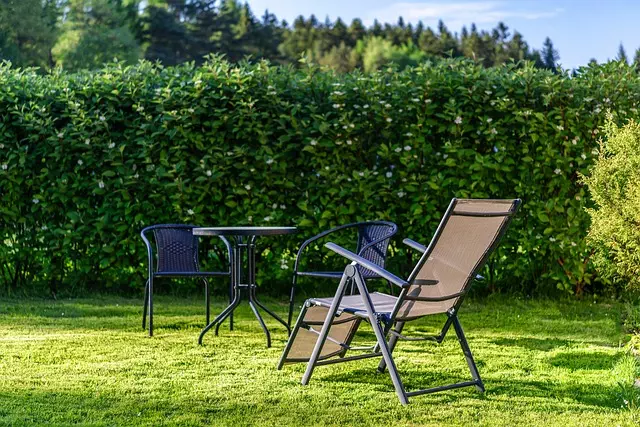Urban lawn care and landscaping have evolved, with homeowners transforming their backyards into multifunctional green spaces that are both aesthetically pleasing and environmentally sustainable. The shift includes the adoption of drought-resistant grasses, xeriscaping, and smart irrigation systems to conserve water and resources. These innovative practices reduce maintenance needs while enhancing the visual appeal and functionality of outdoor areas. Homeowners enhance their properties with vertical gardens, container planting, and hardscaping that complement architecture and provide serene retreats. Emphasizing sustainable lawn care, homeowners use composting to enrich soil health and integrate landscaping for natural windbreaks and shade, which lower energy costs. Organic maintenance products are employed to protect ecosystems from chemical contamination. Mulching grass clippings and leaves serve as natural fertilizers, eliminating the need for synthetic alternatives. Xeriscaping, in particular, is a cornerstone of sustainable landscaping, offering water-wise solutions with native plants and strategic designs that support biodiversity and minimize environmental impact. The integration of edible gardens within these spaces deepens the connection to nature and contributes to the principles of Lawn Care and Landscaping by producing fresh produce in a sustainable manner. The incorporation of smart technology, such as smart irrigation systems, further enhances lawn care efficiency and aligns with the broader movement towards sustainable and responsible landscaping practices.
Embark on a journey through the evolving aesthetic of residential outdoor spaces, where traditional lawns give way to innovative landscaping practices. This article explores the transformation of urban backyards into eco-friendly oases, highlighting the artful approach to lawn care in limited spaces, sustainable practices for landscaping, and the transformative power of xeriscaping with drought-resistant designs. Additionally, learn how to seamlessly integrate edible gardens into your outdoor area, and discover the role of smart irrigation systems in efficient lawn maintenance—key elements in modern lawn care and landscaping.
- Reimagining Urban Backyards: The Art of Lawn Care in Limited Spaces
- Sustainable Practices for Eco-Friendly Landscaping
- The Transformative Power of Xeriscaping: Drought-Resistant Designs
- Integrating Edible Gardens into Your Outdoor Space
- Smart Irrigation Systems and Their Role in Efficient Lawn Maintenance
Reimagining Urban Backyards: The Art of Lawn Care in Limited Spaces

In recent years, urban dwellers have reimagined their backyards as multifunctional oases, integrating lawn care with landscaping to maximize limited spaces. The art of lawn care in confined urban environments has become a testament to ingenuity and sustainability. Homeowners are now opting for drought-resistant grass varieties and xeriscaping to maintain lush greenery without the need for excessive watering. These innovative practices not only conserve water but also reduce maintenance time, allowing residents to enjoy their outdoor spaces with greater ease. Moreover, thoughtful landscaping designs have become essential in creating visually appealing and functional backyards that complement the architectural style of the home while providing a tranquil retreat from city life. By utilizing vertical gardens, container planting, and clever hardscaping elements like pathways and seating areas, urban residents can transform their yards into a harmonious blend of nature and design. The focus on lawn care in these spaces ensures that even limited greenery is meticulously maintained, contributing to the overall aesthetic and creating a harmonious environment that enhances both the home’s exterior and the well-being of its inhabitants.
Sustainable Practices for Eco-Friendly Landscaping

In recent years, there has been a significant shift in residential outdoor spaces with a growing emphasis on sustainable practices for eco-friendly landscaping. Homeowners and landscape professionals alike are recognizing the importance of integrating environmentally conscious lawn care and landscaping methods into their designs and maintenance routines. The adoption of xeriscaping, for instance, has become more prevalent as it significantly reduces water usage by selecting plants native to the region that require minimal irrigation once established. Composting organic waste not only enriches the soil but also decreases the amount of waste sent to landfills. Additionally, the strategic placement of trees, shrubs, and perennials can provide natural windbreaks and shade, which in turn can lower energy costs for heating and cooling homes.
Another key aspect of sustainable lawn care and landscaping is the use of organic and non-toxic products to maintain plant health. This approach protects local ecosystems by preventing chemical runoff into water sources and minimizing the impact on beneficial insects and wildlife. Moreover, the practice of mulching grass clippings and leaves returns nutrients to the soil, further supporting a healthy landscape without the need for synthetic fertilizers. By incorporating these eco-friendly practices, homeowners can transform their outdoor spaces into sustainable havens that not only conserve resources but also contribute positively to the local environment and biodiversity.
The Transformative Power of Xeriscaping: Drought-Resistant Designs

Homeowners seeking sustainable and water-wise landscaping solutions are increasingly turning to xeriscaping to transform their residential outdoor spaces. This approach to lawn care and landscaping prioritizes the use of drought-resistant plants, which not only conserve water but also create visually appealing and diverse garden areas that can thrive in a variety of climates. Xeriscaping reduces the need for frequent irrigation, making it an environmentally friendly choice that aligns with the growing awareness of water conservation. By incorporating elements such as native plants, mulch, and strategic plant placement, xeriscape designs minimize runoff, erosion, and maintenance needs while providing a year-round aesthetic appeal. This not only leads to significant savings on water bills but also fosters biodiversity by creating habitats for beneficial insects, birds, and other wildlife. As a result, xeriscaping stands as a testament to the innovative fusion of lawn care and landscaping with practical sustainability. Homeowners can take pride in their eco-conscious outdoor spaces that require less upkeep while contributing positively to the local environment and community.
Integrating Edible Gardens into Your Outdoor Space

As homeowners increasingly seek to enhance their connection with nature and embrace sustainability, integrating edible gardens into residential outdoor spaces has become a popular trend. This approach not only adds a functional dimension to lawn care and landscaping but also provides fresh produce right at one’s doorstep. The integration of edible plants can be as simple or elaborate as desired, ranging from container gardens on balconies to full-fledged plots within the yard. Regardless of the scale, this eco-friendly pursuit requires thoughtful planning and design to ensure that the garden is both aesthetically pleasing and productive. Selecting the right location with ample sunlight, understanding soil composition, and choosing the appropriate crop varieties are all critical factors in successful edible gardening. Landscaping practices, such as composting organic waste, can enrich the soil and reduce the need for synthetic fertilizers, further aligning with sustainable principles. By combining traditional lawn care with the innovative elements of edible landscaping, homeowners can create a harmonious outdoor space that is both beautiful and bountiful.
Smart Irrigation Systems and Their Role in Efficient Lawn Maintenance

With the advent of smart technology, residential outdoor spaces have undergone a significant transformation in terms of lawn care and landscaping. At the forefront of this revolution are smart irrigation systems, which have become pivotal in maintaining lush, green lawns while promoting water conservation. These sophisticated systems utilize weather forecasts, soil moisture sensors, and precise timing mechanisms to deliver just the right amount of water at the optimal time for plant health. This not only ensures that each drop of water is utilized efficiently but also significantly reduces the amount of water wasted due to overwatering or underwatering. Homeowners can monitor and adjust their irrigation schedules remotely through smartphones or computers, allowing for real-time responses to changing weather patterns and seasonal shifts in lawn care needs. As a result, these systems contribute to sustainable landscaping practices, making them an indispensable tool for anyone committed to maintaining a beautiful outdoor space while being environmentally conscious.
The integration of smart irrigation technology into residential lawn care and landscaping has not only made maintenance more efficient but also more user-friendly. By automating the watering process, these systems alleviate the burden of manual watering, which can be time-consuming and prone to human error. The data-driven approach of smart irrigation systems ensures that lawns receive the exact amount of hydration they need, leading to healthier grass and reduced runoff, a common issue with traditional irrigation methods. This technological advancement represents a significant leap forward in the field of landscape management, offering homeowners a reliable and eco-friendly solution to maintain their outdoor spaces beautifully all year round. With the continued development of these systems, the future of residential lawn care and landscaping is set to be even more sophisticated and resourceful.
Homeowners are increasingly transforming their residential outdoor spaces into vibrant, eco-conscious extensions of their homes. This article has explored innovative approaches to lawn care and landscaping within urban settings, emphasizing sustainable practices that benefit both the environment and the homeowner’s lifestyle. From reimagining limited backyards to embracing xeriscaping, the options for creating beautiful, low-maintenance outdoor spaces abound. Integrating edible gardens not only enhances the aesthetic appeal but also provides fresh produce year-round. Smart irrigation systems further contribute to efficient lawn maintenance, ensuring that every drop of water is used wisely. By adopting these practices, homeowners can enjoy their outdoor areas while contributing to a more sustainable future. Lawn care and landscaping need not be resource-intensive; with thoughtful planning and modern technology, the possibilities for eco-friendly outdoor spaces are endless.


